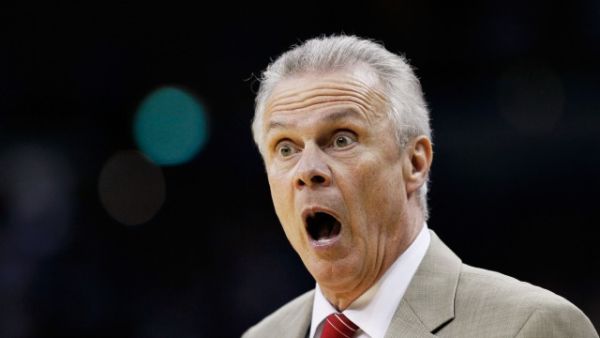30-Second Shot Clock Most Likely to Impact Wisconsin & Virginia
Posted by William Ezekowitz on November 13th, 2015As the 2015-16 college basketball season tips off this afternoon and evening, fans will notice that the shot clock in arenas all across the country has been shortened from 35 to 30 seconds. The change, which was first implemented in NIT, CBI and CIT last year, has been ostensibly made to increase scoring and excitement across the sport. However, the shorter clock will also effectively change the way teams play the game. Success has often been found in extremes in tempo in college basketball (see: the run-and-gun offense of BYU, or the patient efficiency of Wisconsin), and a shorter shot clock will absolutely have an impact on traditional powerhouses’ styles of play and efficacy.

Bo Ryan’s crew was the most efficient offense ever recorded last season. With five less seconds to work with now, will Ryan have to slightly tweak what he preaches? (Getty)
First, let’s look at the data from last season’s NIT, CBI and CIT. Ken Pomeroy ran the numbers on these games and concluded that games with the shorter shot clock averaged about 2.4 more points than in the regular season (with the normal clock). This rise in scoring is because teams added about two more possessions per game using the shorter clock. Working backwards, this means that possessions lasted a little under 18 seconds, as opposed to the norm of 18.4 from last season. Even though this data set is a bit limited in that it is very small (only 75 games) and that it leaves out both very good teams and very bad teams, the general trends exhibited there will probably hold true for the upcoming regular season.
Read the rest of this entry »









































